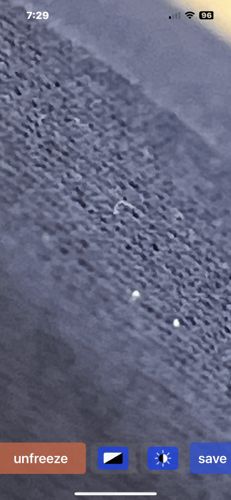Dust Mite
Scientific Name: Dermatophagoides spp.
Order & Family: Acariformes, Pyroglyphidae
Size: 0.2-0.3 mm (too small to be seen with the naked eye)

Natural Habitat
Indoor environments, particularly in bedding, upholstered furniture, carpets, and clothing where they feed on shed human and animal skin cells.
Diet & Feeding
Primarily feed on dead skin cells (dander) from humans and pets, as well as fungal spores.
Behavior Patterns
Dust mites thrive in warm, humid environments. They do not drink water but absorb moisture from the atmosphere. Their life cycle includes egg, larva, nymph, and adult stages, with adults living for about 2-4 months. They are nocturnal and avoid light.
Risks & Benefits
Potential risks include triggering allergic reactions and asthma in sensitive individuals due to their fecal pellets and body fragments. They are not known to directly transmit diseases. There are no direct benefits to humans, but they play a role in decomposition of organic matter in indoor environments.
Identified on: 10/1/2025